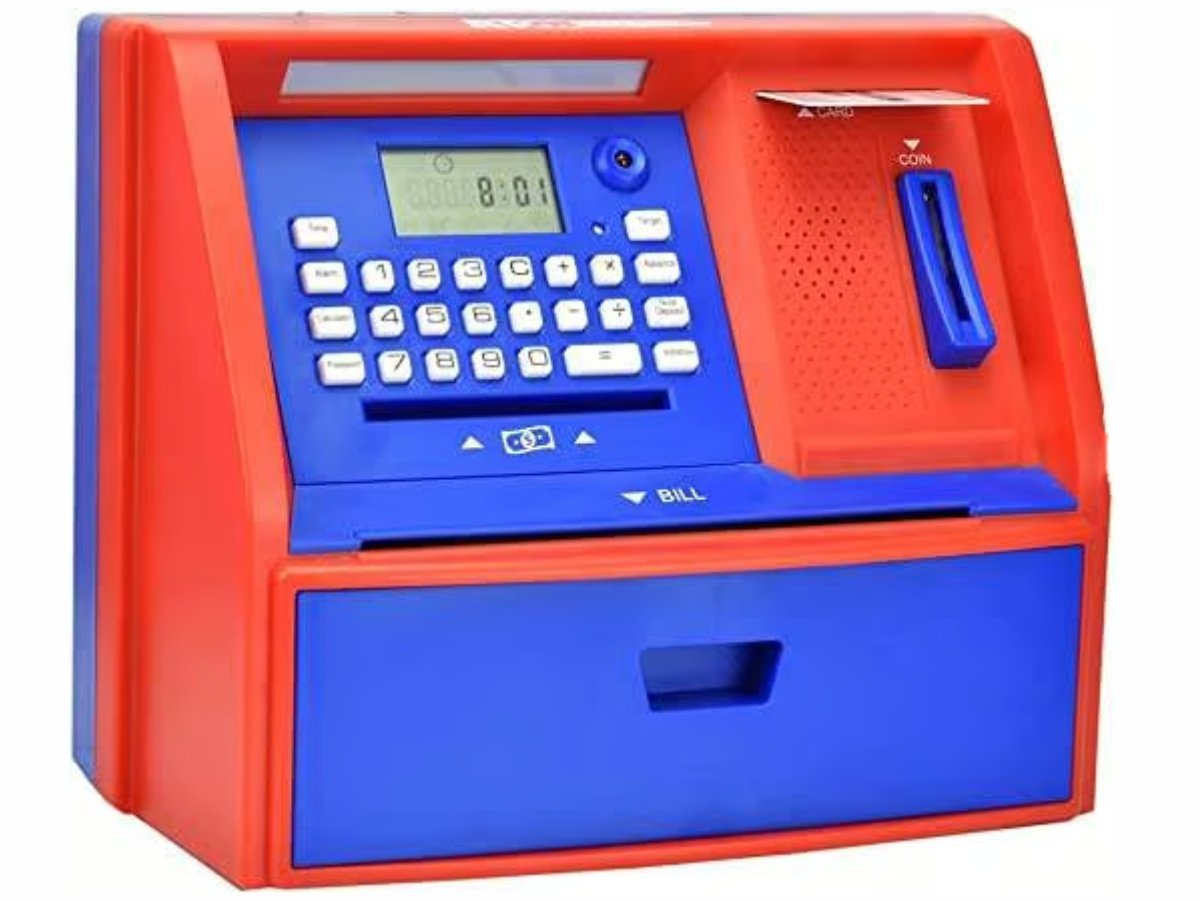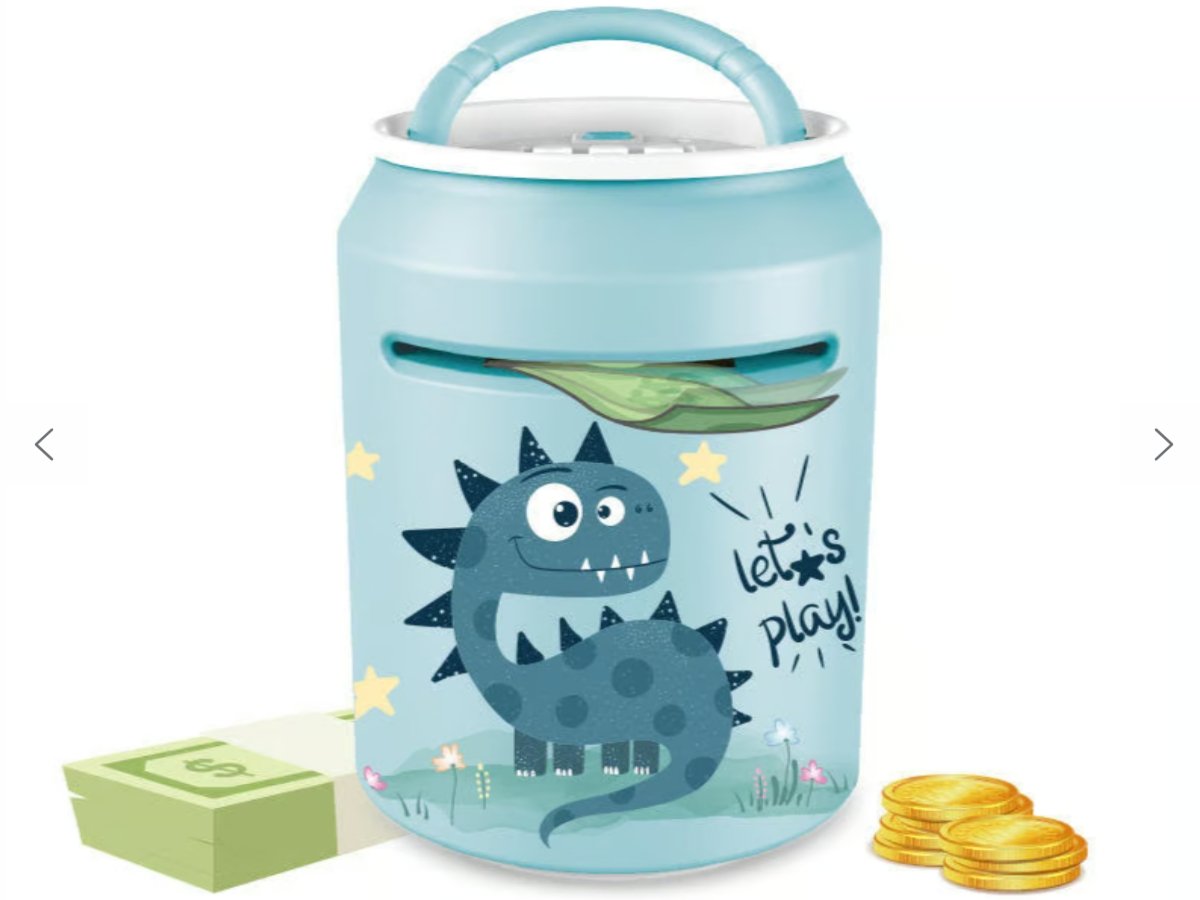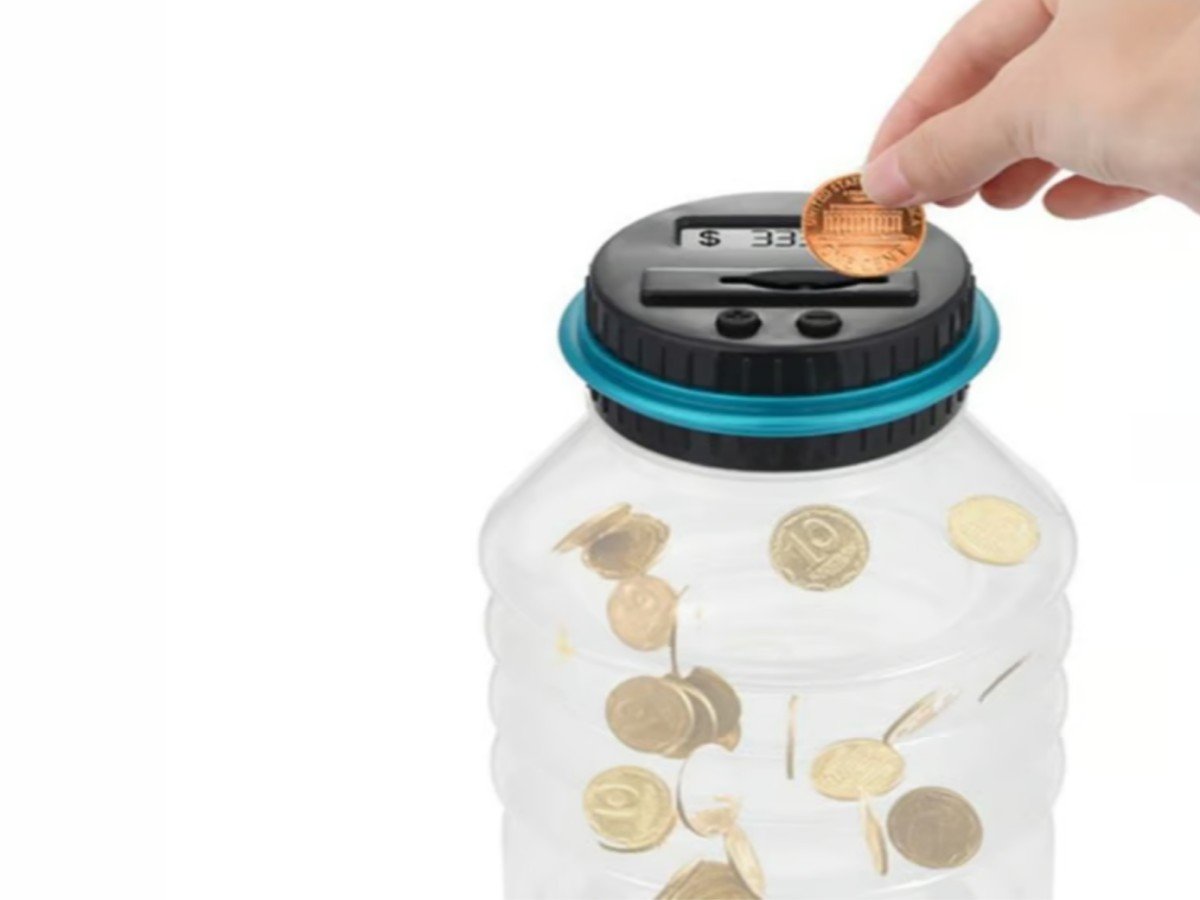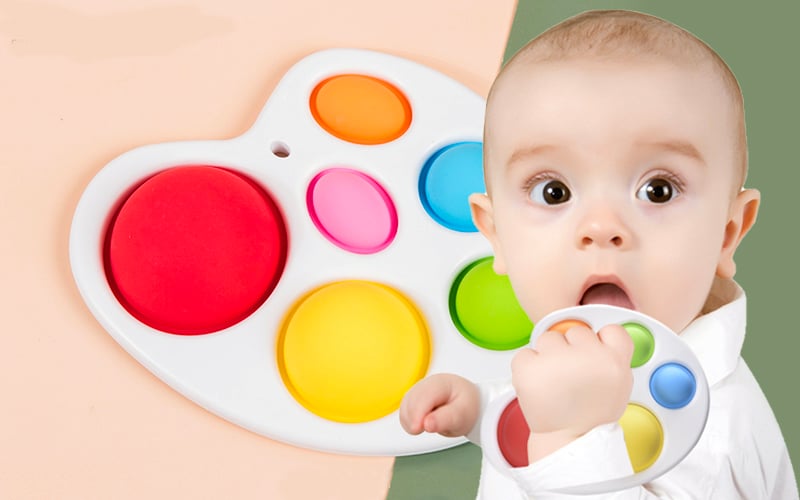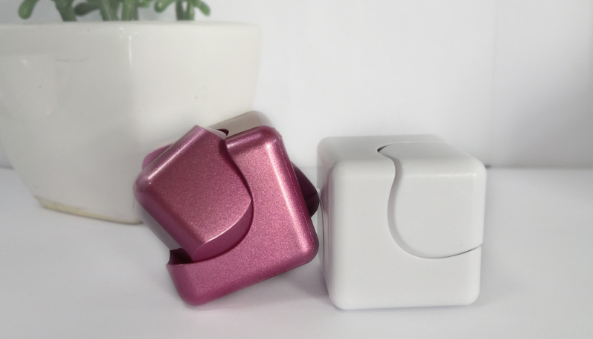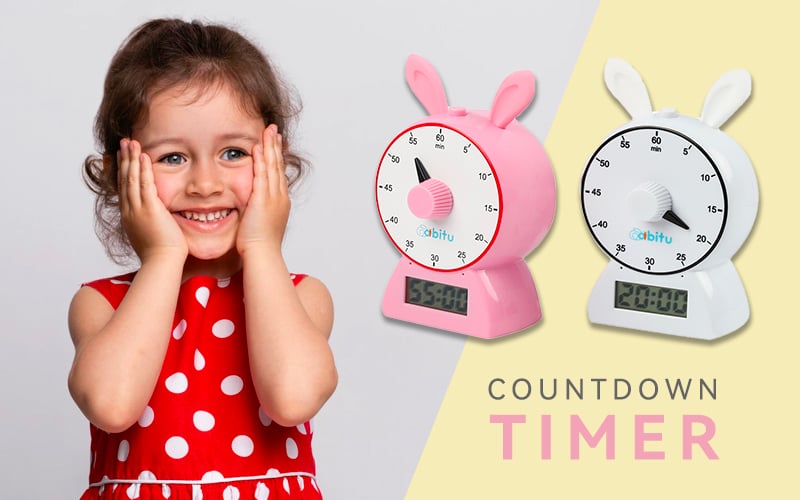blog
Teach Kids Financial Literacy with an Interactive ATM Piggy Bank
Introduction
Teaching kids about money management from a young age is essential for their future financial success. An ATM Piggy Bank for Kids is a valuable tool that combines fun and education, helping children develop financial literacy skills. In this article, we will explore the benefits of an ATM Piggy Bank for Kids, discussing its interactive features, savings motivation, educational value, convenience, and parental control. By introducing kids to this innovative device, parents can lay the foundation for a lifetime of responsible money management.
Interactive ATM Piggy Bank for Kids: Making Saving Fun
An Interactive ATM Piggy Bank for Kids offers a hands-on approach to saving. It simulates a real ATM experience with interactive buttons and a digital display, allowing children to deposit and withdraw money in a fun and engaging way. By making saving a game-like experience, kids become actively involved in their financial journey.
Motivational ATM Piggy Bank for Kids: Encouraging Saving Habits
An ATM Piggy Bank for Kids serves as a motivational tool for children to develop saving habits. These devices often come with features such as goal setting and rewards, encouraging kids to set targets and work towards achieving them. By seeing their savings grow and reaching milestones, children feel a sense of accomplishment and are motivated to continue saving.
Educational ATM Piggy Bank for Kids: Building Financial Literacy
An ATM Piggy Bank for Kids offers educational value by teaching children about money management and basic financial concepts. Kids learn the importance of saving, budgeting, and making informed spending decisions. With features like balance tracking and transaction history, they gain a practical understanding of how money works and the value of responsible financial habits.
Conclusion
An ATM Piggy Bank for Kids provides an interactive, motivational, and educational tool for teaching children financial literacy. By introducing kids to this device, parents can instill important money management skills from an early age. The combination of fun, interactive features, savings motivation, educational value, convenience, and parental control make an ATM Piggy Bank for Kids an invaluable resource in nurturing responsible financial habits.
In summary, an ATM Piggy Bank for Kids makes saving fun and interactive. Its motivational features encourage saving habits, while the educational value builds financial literacy skills. With convenience and parental control features, parents can actively participate in their child's financial journey. Introduce your child to an ATM Piggy Bank and set them on the path to lifelong money management skills.
Smart Savings Made Simple: Exploring the Benefits of Digital Coin Counting Money Jars
Introduction
Saving money can be a challenge, but with a digital coin counting money jar, it becomes an effortless and rewarding experience. These innovative jars utilize advanced technology to automate the process of counting and tracking your coins, providing efficiency, accuracy, convenience, and motivation. In this article, we will explore the benefits of digital coin counting money jars, discussing their efficiency, convenience, accuracy, motivation, and ease of use. Whether you're saving for a specific goal or simply looking to build your savings, a digital coin counting money jar can be a valuable tool in your financial journey.
Efficient Digital Coin Counting Money Jar: Effortless Savings Tracking
A digital coin counting money jar streamlines the process of managing your savings. With its automated counting feature, it accurately calculates the value of your coins, eliminating the need for manual counting and sorting. This efficiency saves you time and effort, allowing you to effortlessly track your savings progress.
Convenient Digital Coin Counting Money Jar: Simplify Your Savings Routine
A digital coin counting money jar offers a convenient way to save and manage your money. Instead of keeping loose coins scattered or stored in multiple places, you can easily deposit them into the jar. These jars often feature a digital display that shows the total value of your savings, allowing you to monitor your progress. When it's time to access your funds, some jars even offer easy withdrawal options, making the process hassle-free.
Accurate Digital Coin Counting Money Jar: Precise Savings Calculation
Accuracy is key when it comes to tracking your savings, and a digital coin counting money jar ensures precise calculations. The advanced technology used in these jars accurately identifies and counts each coin, providing accurate and reliable savings calculations. With this level of accuracy, you can have confidence in the displayed total value of your savings.
Conclusion
A digital coin counting money jar offers efficiency, convenience, accuracy, motivation, and ease of use, making it an invaluable tool for managing your savings. By incorporating this innovative device into your savings routine, you can simplify the process of counting and tracking your money while staying motivated to achieve your financial goals.
In summary, a digital coin counting money jar provides a smart and simple solution for managing your savings. With its automated counting feature, it effortlessly tracks your savings progress. The convenience of depositing coins, accurate calculations, and motivation to save make these jars an essential tool in your financial journey. Consider using a digital coin counting money jar to streamline your savings and achieve your financial aspirations.
Efficient and Convenient: Exploring the Benefits of Digital Coin Counting Jars
Introduction
Managing loose change can be a tedious task, but digital coin counting jars offer a solution to this challenge. These innovative devices simplify the process of counting and tracking your coins, providing efficiency, accuracy, and convenience. In this article, we will explore the benefits of digital coin counting jars, discussing their efficiency, convenience, accuracy, savings motivation, and ease of use. Whether you're saving for a specific goal or simply looking to streamline your coin management, a digital coin counting jar can be a valuable tool.
Efficient Digital Coin Counting Jar: Streamline Your Coin Management
Digital coin counting jars streamline the process of counting and organizing loose change. With their automated counting technology, these jars accurately calculate the value of your coins, eliminating the need for manual counting and sorting. This efficiency saves you time and effort, allowing you to focus on other tasks while your coins are conveniently tallied.
Convenient Digital Coin Counting Jar: Simplify Your Saving Process
Digital coin counting jars provide a convenient way to save and manage your loose change. Instead of having scattered coins throughout your home or wallet, you can deposit them into the jar for safekeeping. These jars often feature a digital display that shows the total value of the coins, keeping you updated on your savings progress. When it's time to access your funds, some jars even offer easy withdrawal options, making the process hassle-free.
Accurate Digital Coin Counting Jar: Ensure Precise Coin Counting
Accuracy is a crucial aspect of coin counting, and digital coin counting jars excel in this regard. These devices utilize advanced technology to accurately identify and count each coin, ensuring precise calculations. With their high accuracy rate, you can have confidence in the total value displayed by the jar, allowing you to track your savings with precision.
Conclusion
Digital coin counting jars offer efficiency, convenience, accuracy, savings motivation, and ease of use, making them valuable tools for managing loose change. By utilizing these innovative jars, you can simplify the process of counting and tracking your coins while staying motivated to reach your savings goals.
In summary, digital coin counting jars provide an efficient and convenient solution for managing loose change. Their automated counting technology ensures accurate calculations, while their digital displays keep you updated on your savings progress. By simplifying the coin management process and providing motivation to save, these jars can help you achieve your financial objectives. Consider incorporating a digital coin counting jar into your routine and experience the benefits of streamlined coin management.
How to Buy Safe Toys
Kids can have a lot of fun playing with their toys. However, it's important to keep in mind that safety should always come first. Each year thousands of children are injured by toys.
Read on to learn what to look for when buying toys and how a few simple ideas for safe use can often prevent injuries. It's also important to look out for button batteries or lithium coin batteries, high-powered magnets or other small objects that children might be tempted to put in their mouths, noses or ears.
Preventing injuries from toys
Most injuries from toys are minor cuts, scrapes, and bruises. However, toys can cause serious injury or even death. This happens when toys are dangerous or used in the wrong way.
10 toy buying tips
Here are tips to help you choose safe and appropriate toys for your child.
Read the label. Warning labels give important information about how to use a toy and what ages the toy is safe for. Be sure to show your child how to use the toy the right way.
Think LARGE. Make sure all toys and parts are larger than your child's mouth to prevent choking.
Avoid toys that shoot objects into the air. They can cause serious eye injuries or choking.
Avoid toys that are loud to prevent damage to your child's hearing. See 10 Tips to Preserve Your Child's Hearing during the Holidays.
Look for stuffed toys that are well made. Make sure all the parts are on tight and seams and edges are secure. It should also be machine washable. Take off any loose ribbons or strings to avoid strangulation. Avoid toys that have small bean-like pellets or stuffing that can cause choking or suffocation if swallowed.
Buy plastic toys that are sturdy. Toys made from thin plastic may break easily into sharp pieces.
Avoid toys with toxic materials that could cause poisoning. Make sure the label says "nontoxic."
Avoid hobby kits and chemistry sets for any child younger than 12 years. They can cause fires or explosions and may contain dangerous chemicals. Make sure your older child knows how to safely handle these kinds of toys.
Electric toys should be "UL Approved." Check the label to be sure.
Be careful when buying crib toys. Soft objects, loose bedding, or any objects that could increase the risk of entrapment, suffocation, or strangulation should be kept out of the crib. Any hanging crib toy (mobiles, crib gyms) should be out of your baby's reach and must be removed when your baby first begins to push up on their hands and knees, or when the baby is 5 months old—whichever comes first. These toys can strangle a baby. See Reduce the Risk of SIDS & Suffocation.
Look out for toys with small batteries or loose magnets
Be careful about buying toys with small batteries (button or lithium coin) or high-powered magnets. If they get loose, younger children might be tempted to put in their mouths, noses or ears, which can cause serious injuries.
Choosing the right toys for the right age
Age recommendations on toys are important, because they help you gauge:
how safe the toy is (if there are any possible choking hazards, for example)
whether your child will be able to understand how to play with the toy
whether the toy will match their needs and interests at their stage of development
Important information about recalled toys
One of the goals of the Consumer Product Safety Commission (CPSC) is to protect consumers and families from dangerous toys. It sets up rules and guidelines to ensure products are safe and issues recalls of products if a problem is found. Toys are recalled for various reasons including unsafe lead levels, choking or fire hazards, or other problems that make them dangerous. Toys that are recalled should be removed right away. If you think your child has been exposed to a toy containing lead, ask your child's doctor about testing for elevated blood lead levels. See Blood Lead Levels: What Parents Need to Know.
More information
How High-Powered Magnetic Toys Can Harm Children
Button Battery Injuries in Children: A Growing Risk
The Secret to a Smarter Baby
10 No-Cost, Screen-Free Activities to Play with Your Preschooler
Putting Toys to Work
2-7 years
Playing with toys is a way for children to explore the world around them - including jobs in the world. If you want to expand the scope of work they explore, here are nine tips to help them enrich their play and have more fun at work!
PROVIDE WORKERS
To explore the world of work, your child needs some workers! Children love giving jobs to their toys, so there’s no need to buy toys with special work outfits. Make sure there are some teddies, dolls, soft toys, or action figures, and watch as your child turns them into teachers, bus drivers, fossil hunters, and rock stars – and a different set of jobs the next day.
INSPIRE WORKPLACES
Children don’t need much to create a workplace either. Their imagination will turn building blocks into a building site, a tea set into a café, and a few tools into a repair business. If they run out of ideas, you can suggest some things from around the house – a few food tins and boxes are enough to create a supermarket, and a towel, hairbrush, and elastics make a great hairdressing salon. All you need to do is give your child the freedom to run with their imagination, and help them pack everything away at the end of the day.
TAKE IT OUTDOORS
Taking your child outdoors opens up a whole new set of jobs for them to explore through play. They can become construction workers in the sandpit; lifesavers at the beach; astronauts in the cubby house; and divers at the pool.
STRETCH BOUNDARIES
If your child has any toys that are dressed for a particular job, especially those with traditional gender roles, encourage your child to give them different jobs occasionally. It’s a good way to break stereotypes and plant the idea that who are you now do not determine who you can become.
Maybe your princess doll could be the astronaut!
Would your superhero toy like to be the teacher today?
EXTEND THE PRETEND
Your child’s play will probably focus on the jobs they see personally and in books, television shows, and movies. If you suggest some less familiar jobs from time to time, you’ll expand the range of jobs they are aware of and broaden their future aspirations.
Would Monkey like to be a snake catcher today? He’s very brave and good with animals!
BUILD VOCABULARY
Sometimes your child will want to play without you, but other times they’ll want to chat away with you, or even invite you to join in. These conversations give you opportunities to develop your child’s work vocabulary:
equipment – Teddy looks very professional with that stethoscope.
tasks – Wow, Monkey repaired that engine quickly.
workplaces – Does Kitty grow roses at a nursery, or at the botanic gardens?
names of jobs – Rabbit makes a good receptionist.
PLANT SEEDS
Your conversation can also plant ideas about how careers develop:
interests – What did Monkey like to do when she was little? Is that why she decided to become a mechanic?
education – Where did Kitty learn to be such a good farmer? Did he have to study special subjects?
career change – Does Teddy want to be a hospital doctor forever? I bet she could become a researcher if she wanted to and help find the cure for a disease!
MAKE IT PERSONAL
Your child won’t need to make any career choices for a long time yet, but it’s good to throw in the occasional comment or question about what they might do in the future:
It looks like Mouse loves being a truck driver. Would you?
I really like this house you built me. Maybe you could be an architect one day!
What parts of an astronaut’s job would you like?
Even if your child announces I’m going to be a doctor when I grow up, they’ll probably change their mind next week or next month. And that’s a good thing – their ‘job’ at the moment is to have fun, to use their imaginations, and to explore the world (and sometimes the world of work) through play.
Is play better with natural materials?
Toys are not better than natural materials. But they are not inherently worse, either (setting aside arguments about sustainability).
The thing that makes an object interesting is the range of possibilities it offers. You can do a lot with clay or Lego. But an electronic toy that makes funny sounds when you press a button? Not so much.
Take a look at the mess in your child's bedroom. The best toys are used again and again in different contexts: in construction, in pretend play, in the bath. When I tidy my daughter's bedroom my instinct is to put all the doll's house toys in one basket, the blocks in another and the beads in a third. But as soon as she goes in there to play, it's all tipped onto the floor and she grabs whatever serves her purpose. The images on the 100 Toys blog celebrate beauty and order but we all know that that's not how our children's rooms look most of the time.
Toys as tools for thought
So here we are at the crux of it all: materials help us to think. If we are building and we want to span a gap between two towers we look around for something to form a bridge. That could be a log or a Lego baseplate.
When children encounter a novel problem, they first have to work through it physically. They have to turn over objects in their hands before they can turn them over in their minds.
The things we surround ourselves with matter. They help us think through problems. Better tools make for better thinking.
The link to schemas
When we play with materials in the natural environment, we are solving problems our ancestors would have encountered. How to bridge a gap, how to sharpen a stick, how to enclose a space. We must make do with the same resources: the things we find lying around.
And so we fall back on those building blocks of thought: schemas. Enclosing, rotating, positioning, enveloping.

